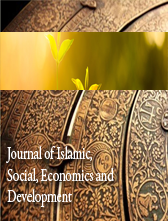POST COVID-19: MALAYSIAN CONTRACTOR’S PERSPECTIVE ON THE IMPACTS ON THE PRICE OF BUILDING MATERIALS
Abstract
Building materials are the major component of any construction project, and price fluctuations may have a substantial effect on the whole construction process. There are significant issues happened between the year 2020 to 2022, presented a significant impediment for the construction industry. Since 2020, the price trends of building materials are anticipated to increase substantially owing to the post-pandemic closure and accelerated rise of economic activity. Therefore, the aim of this research is to investigate the soaring prices of building materials post COVID-19. Questionnaires were distributed among contractors in Johor and Selangor to investigate the sky-rocketing prices of building materials and its impacts post COVID-19 pandemic, and to analyse factors affecting the inflation price of building materials from contractor’s perspective. With the aid of SPSS Software, descriptive analysis is used to analyse the data from 91 respondents. Findings shows that Steel (reinforcement bar) has the most impact on contractors, risking in facing financial difficulties. The main factor of the growing price of building material is due to Post Movement Control Order (MCO) and supply chain disruption. According to the survey, government and contractors should play their role in curbing this problem by providing financial aids and allow for price escalation clause in contract respectively. This issue needs to be addressed and control on the escalation of building materials.













